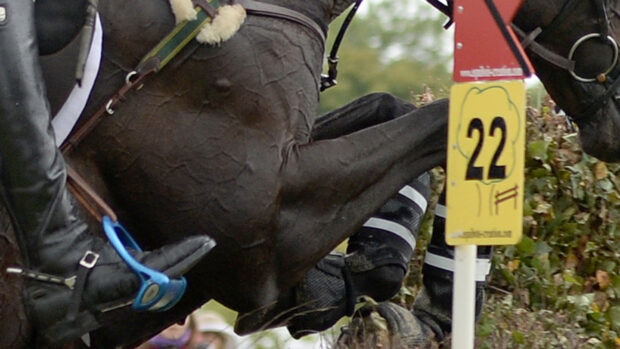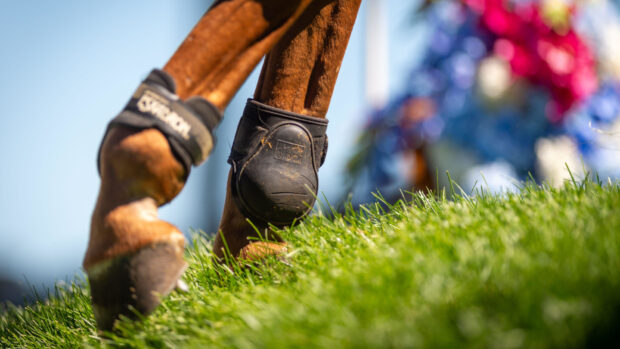The FEI dressage committee is “in favour” of keeping the double bridle compulsory at the top levels of international grand prix – as the debate continues.
The FEI independent ethics and wellbeing commission’s recommendation to make double bridles optional in grand prix dressage – and spurs optional in any FEI discipline – came to light when the International Dressage Riders Club (IDRC) and International Dressage Trainers Club (IDTC) published a letter strongly opposing the proposal (news, 6 Oct).
The letter, which has since been removed from the groups’ websites, raised points including their opinion that opposition to the double bridle stems from a “lack of understanding“ of how and why it is used, that double bridles and spurs used properly allow riders to give defined aids, and that making them optional would have “no positive impact on horse welfare”. In response, the FEI said the proposal was part of an ongoing consultation process – and an interim report will be presented at next month’s general assembly.
The matter has continued to be a talking point and in an update on 14 October, the FEI gave H&H further information on how the recommendation arose. The FEI spokesman said the ethics and wellbeing commission met in August and agreed to submit six recommendations on “technical/sport aspects, and research and education” to the FEI. The technical/sport recommendations were shared with the technical committees, and on 20 September the dressage committee discussed the proposals, during which it was highlighted that under the current rules, double bridles are optional up to CDI2* level – but mandatory at CDI3* and upwards.
“This change, introduced in 2019, reflects a progression in the level of skills of the athlete and training of the horse from low and medium level to the highest level of performance,” said the spokesman.
“The dressage committee is in favour of maintaining the double bridle compulsory at grand prix level.”
The spokesman added that a final report was presented to the FEI board, and on 14 October the recommendations were submitted to the national federations and stakeholders, ahead of discussion at the general assembly.
As the debate continues, H&H sought opinions on the proposal from stakeholders.
Last week IDTC president David Hunt wrote to H&H (letters, 13 October) after the organisation “heard some of the reaction” to the IDRC and IDTC letter. He said the organisations’ opposition to the proposal was based on the “optional” aspect, and said it was put forward as “advancing horse welfare” – but if something is deemed harmful he believes it should be banned. He added that “welfare and sport issues must not be confused”.
He then told H&H making the double bridle optional is a “slippery slope”.
“Riding in a double bridle and spurs is traditional, but it is also a very skilful thing. What concerns me is if they try to dumb everything down; you allow more people perhaps to compete, but you’re dumbing down the the level of competition,” he said.
“‘Welfare’ is being used as an escape because it catches people’s attention. If [the ethics and wellbeing commission] think a double bridle is a welfare issue, then we shouldn’t be using it.”
Mr Hunt, who said he was not aware the letter had been taken down, added that the sport is “rigorous in its protection of horses”.
“We have stewards in place and we are very restrictive in the bits we are allowed to use, unlike other sports where they have a massive variety. Our horses are looked after to such a high degree, and I struggle to find why they keep picking on dressage,” he said.
“If we start allowing things to creep in then we’re dulling the whole brilliance of the sport. That’s what makes it so beautiful, because horses are in self-carriage and they’re not supporting and leaning on the bit, which they can do in a snaffle.
“We are constantly making sure that we have welfare as our main objective. We are open to and seek people’s opinions – but I don’t want our sport dragged down by a small majority of people who think that the horse should only be out in the field grazing.”
Irish dressage rider Dane Rawlins, who is on the IDTC board, agreed with Mr Hunt that it is a “sport issue, not a welfare issue”.
“The epitome of riding international grand prix is to produce a horse to the highest standards with the classical tack. My grand prix horse goes better in a snaffle than a double, it’s harder to ride in a double sometimes, but it’s not a welfare issue,” he said.
“Part of the achievement of international dressage is to do things correctly and well with your horse. The perception that putting a double bridle on is some barbaric way of overcontrolling a horse is misguided.”
The Dutch national federation is in agreement with making double bridles optional – and put this suggestion to the FEI during the periodic rules revision this year. At the time the FEI dressage committee responded that double bridles should remain at CDI3* and above, “as this is the highest levels of competition”.
“The welfare of the horse is our number one priority. Therefore we put forward several proposals in this year’s rules revision that underline this,” Irish Boelhouwer, the federation’s high performance manager told H&H.
“There is no valid reason to keep the double bridle mandatory. If a rider thinks his or her horse would perform better in a snaffle, why not let them? Everybody can keep riding with the double bridle if they think it works best. The jury still looks at all the same markers regardless of their bridle. We’ve given the riders in the Netherlands this option in the last 15 years and there has been absolutely no problems, the same goes for use of spurs. It’s disappointing that these suggestions are dismissed without any substantial arguments”.
Olympic dressage rider Laura Tomlinson told H&H she felt it is not a “black and white” issue.
“You can respond on so many levels; there’s the welfare side, the sport side, and the traditional side,” she said. “There are horses who are more comfortable in a snaffle bridle, not because of what the rider is doing, but because of the way their mouths are shaped. I definitely have horses who I prefer to ride in a snaffle.
“I don’t know whether I think it should or shouldn’t be optional, but I think there should be a healthy debate and we should come up with the reasons for and against.”
World and European medallist Michael Eilberg told H&H the argument comes down to horse and rider preference.
“People who have horses that are happy in a double will be happy to keep the rule, and people who have horses they wish they could ride in a snaffle would like the rule to change,” he said.
“I’ve had it myself where a horse doesn’t like the double and doesn’t give such an easy ride, and the riding might not be as good, so the options do lend themselves I think possibly to better riding if the double was optional – but I agree with David Hunt that this is a sport issue, not a welfare issue.”
British team dressage rider Richard Davison told H&H it is a “shame” that the work of the ethics and wellbeing commission had this “unfortunate start”.
“This clearly shows that the FEI needs to take its stakeholders with them on any policy move, and we need to collaborate. For me, the issue has been a lack of collaboration and communication with stakeholders before the recommendations were presented to the FEI,” he said.
“We need to work together with the commission because the point of the commission is not only to decide on issues of wellbeing, but is to protect the use of horses in sport – which are very commendable aims.”
Mr Davison added that the double bridle being optional at grand prix level is “nothing new” – it is optional at national level in a number of countries including the UK.
“We all know some horses will find one bit in their mouth more comfortable than two – that’s why you’ll see many top riders training up-and-coming horses in snaffles or doubles and they interchange them, so I don’t really feel it’s necessary to start going down rabbit holes of what doubles and snaffles do and don’t do,” he said.
“The principle of the double bridle being optional is already embedded in FEI rules, all that they’re talking about is extending that to CDI3* and upwards.”
You might also be interested in:

‘Controversial’ proposal around double bridles and spurs sparks debate

More powers to pull riders up and debate over dressage: how horse sport may look in 2023

Subscribe to Horse & Hound magazine today – and enjoy unlimited website access all year round
Horse & Hound magazine, out every Thursday, is packed with all the latest news and reports, as well as interviews, specials, nostalgia, vet and training advice. Find how you can enjoy the magazine delivered to your door every week, plus options to upgrade your subscription to access our online service that brings you breaking news and reports as well as other benefits.




